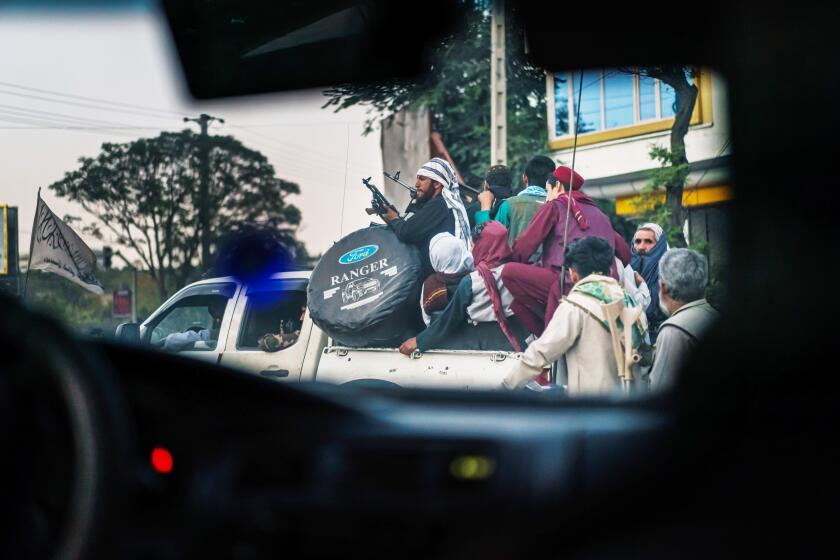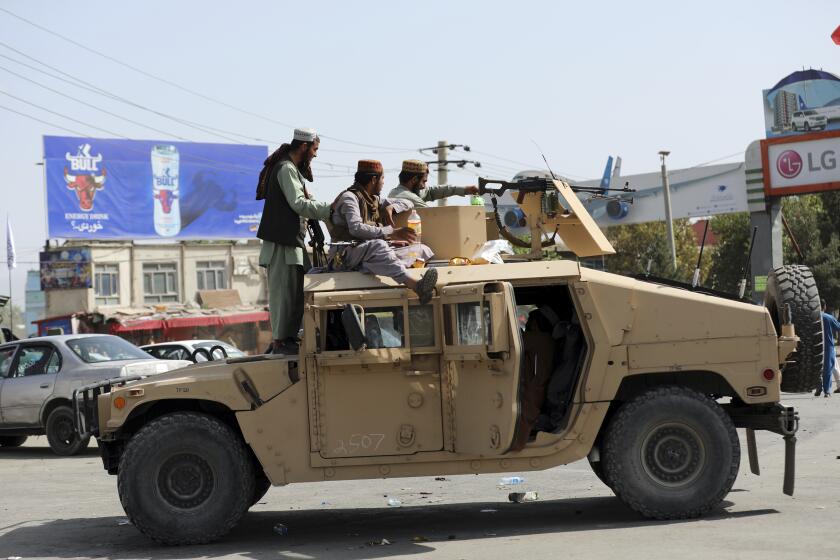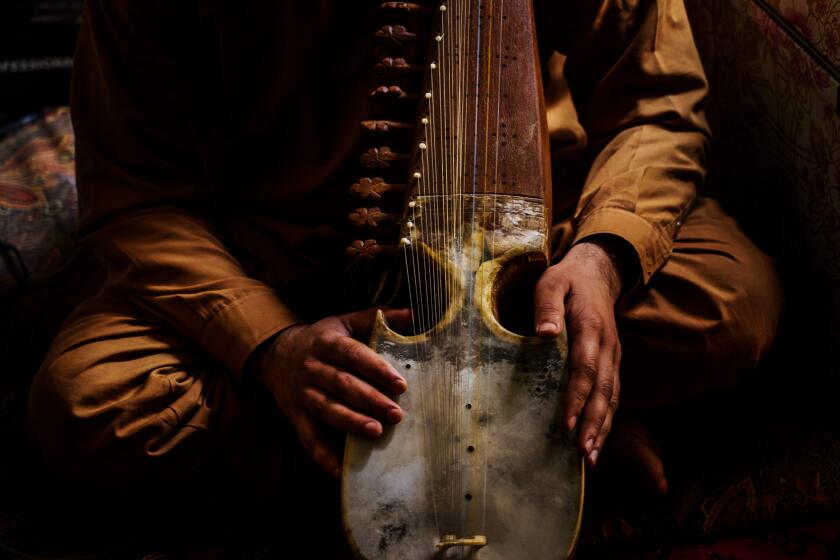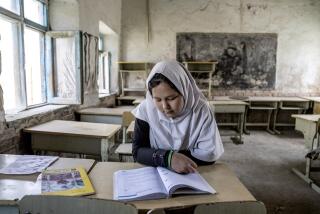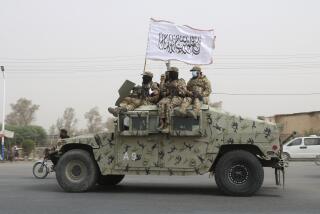Office towers, shopping malls: Taliban encounters cities remade during its absence
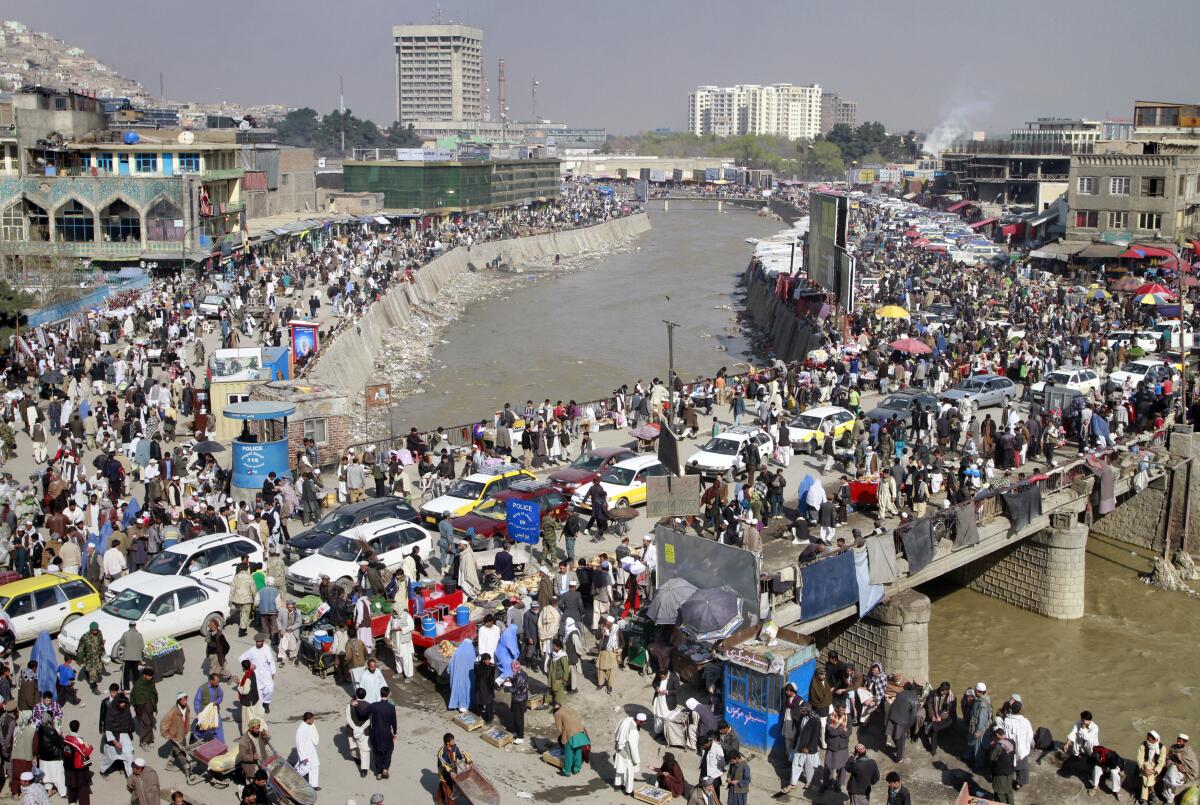
Ezanullah, one of thousands of young Taliban fighters from the countryside who rode into Afghanistanâs capital over the weekend, had never seen anything like it.
The paved streets of Kabul were lined with towering apartment blocks, glass office buildings and shopping malls. The plush furniture inside the Interior Ministry was like âsomething I thought of in a dream,â said the 22-year-old fighter from the countryâs mountainous east.
He said he plans to ask his commander if he can stay. âI donât want to leave,â he said.
The encounter highlights how much Kabul and other Afghan cities have changed in the 20 years since the Taliban, whose members mainly hail from rugged rural areas, last ruled the country. An entire generation of Afghans has come of age under a modernizing, Western-backed government flush with development aid.
Younger Afghans have no memory of the Talibanâs rule from 1996 to 2001, when the group imposed its harsh interpretation of Islamic law. Many fear those gains will be reversed now that the Taliban is back in power and the last U.S. troops are on their way out.
Protesters in Jalalabad who tried to raise the Afghan national flag in place of the Talibanâs were dispersed by fighters wielding weapons.
The Taliban has been trying to signal moderation in recent days, offering amnesty to those who fought them, inviting women to return to work and pledging to restore normal life after decades of war. But many Afghans, particularly women, remain deeply skeptical of the groupâs intentions.
Ezanullah was surprised when two women said hello to him on the street.
âThey said, âWe were afraid of you and thought you were horrible,ââ he said. âBut I told them, âYou are like my sisters, and we will let you go to school and continue your education and give you security.
ââJust look after your hijab,ââ he added, referring to the Islamic headscarf that covers the hair but not the face.
In possession of military bases and weapons, the Taliban has wound up as the beneficiary of the $83 billion lavished on Afghan security forces.
Whether or not the Taliban has changed, the country they now rule has. It is light years ahead of the one they captured in 1996 after four years of civil war following the Soviet withdrawal and the 1992 collapse of a pro-Communist government.
Then the city was in ruins, ravaged by warlords who would later ally with the U.S. Most Afghans traveled Kabulâs rutted roads by bicycle or in beat-up yellow taxis. There was only one computer in the entire country, and it belonged to Mullah Mohammed Omar, the Talibanâs reclusive leader, who did not know how to turn it on.
Under Taliban rule, television and music were forbidden. Women were barred from attending school or working outside the home, and had to wear the all-covering burqa whenever they went out in public.
Today, the country is home to four mobile phone companies and several satellite TV stations with female anchors, one of whom interviewed a Taliban official Monday. The Taliban fighters themselves carry smartphones and could be seen taking selfies as they marveled at the capital they had rolled into virtually unopposed after 20 years of war.
An Afghan tradition was all but stamped out by religious extremists who â hearing sin instead of song â outlawed music and threatened with death its practitioners.
Videos circulating online appear to show bearded Taliban fighters laughing and horsing around on amusement park rides and in an indoor gym.
Some things have gotten worse since the Taliban was last in power.
The city has been in the grip of a crime wave for years, one many fear will get even worse after prisons and government armories were emptied during the Talibanâs advance. One of the few successes of the groupâs harsh Islamic rule was the virtual elimination of crime â suspected thieves had their hands chopped off; other accused criminals were executed in public.
The Taliban has pledged to restore law and order, but that could take time and might lead them to resort to brutal measures. The cityâs population has quintupled to about 6 million over the last two decades. The Taliban, which has had no major presence in Kabul since 2001, has been going door to door registering names and collecting weapons in recent days.
In the meantime, many Afghans fear looters posing as the Taliban more than they fear the militants themselves, said Saad Mohseni, owner of the popular TOLO TV network, who elected to stay in the capital after the Taliban takeover.
âThese pretend Taliban could be very dangerous, because they are just hoodlums,â he said.
More to Read
Sign up for Essential California
The most important California stories and recommendations in your inbox every morning.
You may occasionally receive promotional content from the Los Angeles Times.
